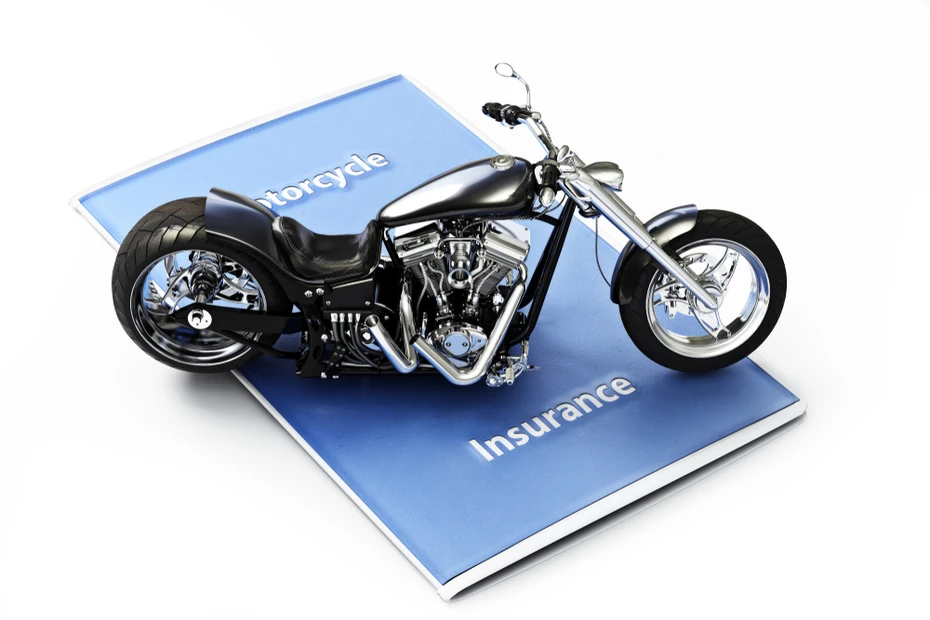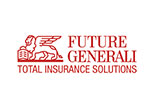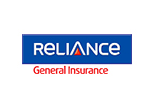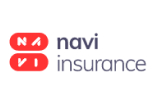Bike Helmet Safety Ratings: ISI, SNELL, DOT, SHARP, and ECE
Helmet Safety Ratings
When it comes to two-wheeler riding, safety is the most important consideration. This is where a helmet comes into the picture. A helmet is one of the most important pieces of safety equipment as it is the main shield that protects the rider's head in the event of an accident. However, not every helmet provides the same degree of protection.
A helmet's effectiveness is shown by its safety ratings, which are a crucial factor that all bikers should familiarise themselves with prior to purchasing. The main safety ratings—ISI, SNELL, DOT, SHARP, and ECE—will be explained in detail in this comprehensive article. This will help you prioritise safety and make educated decisions.
Table of Contents
- A Precursor to Helmet Safety Ratings
- Indian Standards Institution (ISI): History and Approval
- Background and Acceptance of SNELL (Snell Memorial Foundation)
- Transportation Department (DOT) History and Approval
- SHARP (Safety Helmet Rating and Assessment Programme)
- The European Commission for Economy (ECE)
- Choosing the Correct Helmet to Help You Ride Safely
- When to replace bike helmets?
- FAQs
A Precursor to Helmet Safety Ratings
It's critical to understand the idea behind helmet safety ratings before delving into the particulars of each rating. These ratings are benchmarks established by numerous international bodies to evaluate the efficacy and safety of helmets in preventing head injuries to riders in the event of an accident. Numerous factors are tested, such as field of vision, impact absorption, and the efficiency of the retention system. Let's now explore the details of each safety rating.
Indian Standards Institution (ISI): History and Approval
One common certification mark on many Indian products, including bike helmets, is the ISI mark. This certification, which is overseen by the Bureau of Indian Standards (BIS), guarantees that the product satisfies Indian safety and quality requirements. In the Indian market, it is a prominent and in-demand mark.
Assessing Factors
The ISI testing protocol entails assessing the helmet's basic materials, construction quality, and end product, among other criteria. Among the crucial exams are:
- Assessing the impact absorption capacity of the helmet in the event of an impact.
- Examining the helmet's ability to withstand penetration by sharp objects.
- Assessing the retention system effectiveness, which means assessing the chin strap's sturdiness and potency.
Understanding the Mark
A label bearing the licence number and the ISI logo will be present on a helmet that has been ISI-tagged. The helmet is guaranteed to meet the safety requirements outlined by the BIS if this mark is present.
Background and Acceptance of SNELL (Snell Memorial Foundation)
Focusing on helmet safety, the Snell Memorial Foundation is a non-profit foundation. Voluntary Snell standards are thought to be stricter than many official regulations. These criteria are well acknowledged and frequently chosen for fast-paced, elite racing competitions.
Assessing Factors
In order to evaluate the safety performance of helmets, Snell performs a number of thorough tests, such as:
- Impact Testing: To assess a helmet's ability to protect wearers, impacts are applied to it from different directions.
- Shell Penetration Test: To determine a helmet's resistance to sharp items, penetration tests are conducted on it.
- Retention System Test: The chin strap and buckles undergo extensive testing to determine their strength and longevity.
- Flame Resistance: This test assesses the helmet's ability to withstand flames specifically for racing helmets.
Understanding the Mark
A Snell certification sticker, signifying its exceptional quality and safety features, will be present on a helmet that satisfies Snell criteria. In order to give buyers transparency and assurance, the label additionally includes the year of manufacturing and the standard number.
Transportation Department (DOT) History and Approval
The US Department of Transportation (USDOT) is the organisation that created the DOT helmet standard. It's a requirement for helmets sold for on-road use in the United States. The quality of DOT-certified helmets is acknowledged worldwide, despite being largely a US requirement.
Assessing Factors
The tests that the DOT administers are centred on:
- Impact Absorption: To assess a helmet's absorption capacity, it is subjected to a series of controlled collisions.
- Penetration Resistance: To evaluate how well the helmet withstands piercing by sharp items.
- Evaluation of Retention System: Assessing how well the helmet's retention system maintains the helmet firmly on the head.
Understanding the Mark
A label with the word "DOT" displayed indicates that a helmet is DOT-certified, meaning it meets or exceeds DOT safety criteria. It guarantees a respectable degree of safety for the rider when using the road.
SHARP (Safety Helmet Rating and Assessment Programme)
Context and Acceptance
The government launched the SHARP helmet safety programme to assist motorcyclists in selecting helmets with knowledge. It makes it simpler for riders to select a helmet that delivers the best protection possible by providing a rating system based on the safety features and performance of the helmet.
Assessing Factors
SHARP puts helmets through rigorous testing to evaluate a range of characteristics, including:
- Impact Protection: To evaluate a helmet's level of protection, it is put through several hits at varying speeds.
- Tests: A battery of assessments to gauge the retention system's efficacy.
- Comfort and Fit: Although not a safety characteristic, SHARP evaluates the comfort and fit of helmets in order to help users choose helmets that will be comfortable for extended rides.
Understanding the Mark
Helmets that have undergone SHARP testing will display a rating out of five stars providing a clear indicator of their safety performance. The SHARP website provides riders with comprehensive test results and a star rating, enabling them to make an informed decision.
The European Commission for Economy (ECE)
Context and Acceptance
Over 50 nations worldwide, including those in Europe, have adopted the ECE rating as a standard for helmet safety. The ECE rating is overseen by the United Nations. ECE-certified helmets provide riders with a decent mix of safety and comfort.
Assessing Factors
The ECE evaluates the helmets using a wide range of methods, such as:
- Testing the helmet's ability to withstand blows during crashes is known as impact absorption.
- Assessing the helmet's ability to withstand piercing by sharp objects is known as penetration resistance.
- System of Retention: An array of assessments to gauge the robustness and efficiency of the helmet's retention mechanism.
Understanding the Mark
Helmets approved by the ECE will bear the ECE 22.05 label, which certifies that the product meets the ECE's requirements for quality and safety. This certification attests to the helmet's ability to offer sufficient protection when riding.
Choosing the Correct Helmet to Help You Ride Safely
You may choose a helmet that best fits your riding style and offers the best amount of protection by being aware of and interpreting these safety ratings. The appropriate helmet has the potential to save lives in dire circumstances.
Fit and comfort should be taken into account when choosing a helmet in addition to safety ratings. The protection provided during an impact can be improved with a properly fitting helmet. Try on many helmets and select the one that fits comfortably.
When to replace bike helmets?
Helmets are essential for both the rider's and the pillion's safety and are required by law. Replacing your motorbike helmet every five years is commonly advised. Nonetheless, a helmet's longevity may be impacted by some elements, necessitating an earlier replacement.
- Impact damage: Even if there are no outward symptoms of damage, it is still necessary to replace your helmet if it has been in a collision or has been subjected to any other kind of impact. The helmet's interior structure might have been damaged, making it less protective in the case of another collision.
- General wear and tear: A helmet's materials may deteriorate with time and lose some of their ability to protect your head. The sun, heat, and other environmental elements can all contribute to this.
It is advised that you use comfortable, well-fitting helmets. Make sure you acquire a new helmet that fits properly and provides the appropriate comfort if you find an old one uncomfortable.
FAQs
- For what reason are helmet safety ratings used?
The efficiency and safety level of helmets in preventing injuries to riders during an accident is determined by ratings called helmet safety, which are set by a number of international groups. These ratings, which are the result of extensive testing on a number of factors, such as impact absorption and penetration resistance, help riders make an informed decision by letting them know how protective a helmet may be.
- What safety differences exist between ISI and ECE ratings for helmets?
In response, products largely found in India bear the ISI (Indian Standards Institution) certification mark, which verifies that the goods fulfil safety and quality requirements in India. Based on factors including the quality of construction, the raw materials used, and the finished product's safety features, it rates the helmet. However, the United Nations-mandated ECE (Economic Commission for Europe) standard, which is internationally accepted, provides a balanced approach to rider comfort and safety. It conducts extensive testing to assess helmets based on characteristics like penetration resistance, impact absorption, and retention system efficacy.
- What makes the SNELL rating so strict?
The Snell Memorial Foundation created the SNELL rating, which is frequently seen as more rigorous because of the thorough and voluntary nature of the examinations it performs. These include thorough impact testing from many perspectives, penetration tests of shells, and tests of retention systems. In addition, they assess racing helmets for flame resistance as well, covering a wider range of safety considerations and establishing it as a strict standard in the helmet safety field.
- How does the SHARP rating help cyclists select a secure helmet?
The Safety Helmet Assessment and Rating Programme, or SHARP, rating helps motorcyclists by offering a simple-to-understand star rating system that shows the helmet's level of safety. In addition to assessing the helmet's impact protection and retention system efficacy, it also takes fit and comfort into account, helping riders select helmets that ensure safety without sacrificing comfort on extended rides.
- How can I tell whether a helmet has DOT certification?
A helmet that has been approved by the Department of Transportation (DOT) will have a label bearing the acronym 'DOT' prominently, signifying that it satisfies or surpasses the safety criteria set out by the United States Department of Transportation. This accreditation, which is widely acknowledged as a symbol of excellence and safety, is required for helmets sold in the USA for use on public roads.
- Does a helmet need to be rated for safety?
Even though it might not be required by law in every area, choosing a helmet with an established safety rating is strongly advised. These ratings guarantee that the helmet has passed rigorous testing to assess its level of protection, potentially providing a higher level of safety in the event of an accident.
- Is it safe to wear an ECE-rated helmet on lengthy rides?
Yes, helmets bearing the ECE classification are recognised for offering an excellent mix of comfort and safety, which makes them appropriate for extended journeys. They are put through rigorous testing to determine whether they can provide protection in the event of a collision as well as to gauge how comfortable they are to ride in.
- Is it possible to locate helmets that have several safety standard certifications?
In response, a large number of helmets on the market have received several safety standard certifications. To expand their market reach and reassure consumers of the safety aspects of their products, manufacturers frequently strive to meet numerous international safety standards. If you're buying a helmet, you may find out what certifications it has by looking at the labelling or product description.
- How often are the requirements for safety updated?
The answer is that different groups may update their safety standards at different intervals. Nonetheless, they are often updated on a regular basis to take into account improvements in materials and technology as well as the dynamic nature of road safety. For the most recent information, it is advised to regularly check the official websites of these agencies.
- How do safety ratings affect a helmet's cost?
The cost of helmets that meet strict safety regulations may increase because of the extensive testing and premium materials used in their production. It is important to remember, though, that spending money on a well-regarded helmet is a wise move because it can provide better protection and possibly avert serious injuries in the event of an accident.














































